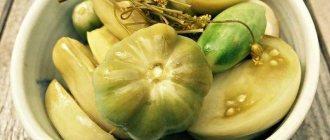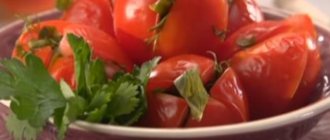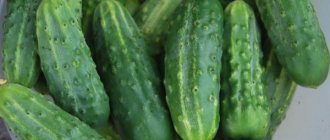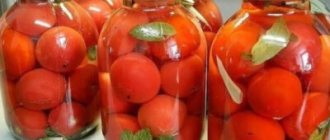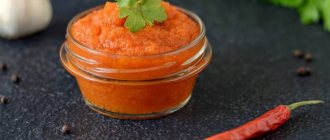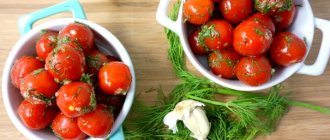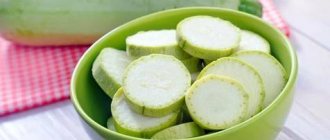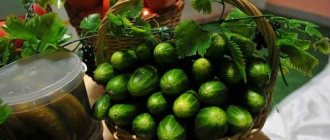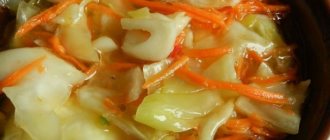Tomato horseradish “Ogonek”, recipes for which you will find here for the winter, is our Russian answer to the famous Abkhaz adjika, traditionally prepared only from hot peppers and garlic. The classic Russian ogonek is made from horseradish with the addition of different types of peppers, carrots, onions, and eggplants. But they have one thing in common - it is a very spicy seasoning for meat.
The spicy seasoning prepared for the winter is called differently, but always with humor. Gorloder, horseradish, horseradish, adjika , or even a horseradish snack - don’t be surprised to hear. Siberians actually say it’s a cobra. Horseradish is made with or without cooking and does not always require sterilization. There is a recipe for salad without horseradish. I’ll introduce you to all the options for the most delicious preparations. All that remains is to choose the right one and get down to business.
- I recommend putting the seasoning in small jars; they are more convenient for storage and use.
- Previously, vegetables were chopped with a meat grinder. Nowadays, modern assistants have appeared in the arsenal of women, greatly facilitating and speeding up the cooking process. This is a food processor, blender.
- Advice. While you're scrolling, you'll cry your heart out. To protect your eyes from the vigorous “offender”, go outside to work. Or place a thick bag over the neck of the meat grinder. But the best option is to entrust the work to your husband, let him cry, it’s good for him.
Classic Fire of Tomatoes and Garlic
The most popular recipe for preparing hot seasoning for the winter. And although it is made without hot pepper, the gorloder is made from the heart. adjika from tomatoes without cooking , go to another page for recipes.
Ingredients:
- Tomatoes - kilogram.
- Horseradish root – 100 gr.
- Garlic – 100 gr.
- Salt – 1-2 small spoons.
- Granulated sugar - a teaspoon.
How to prepare horseradish:
- Cut the tomatoes and horseradish into pieces. Grind in any available way.
- Grind the garlic cloves in the same way into a puree, passing through a press.
- Mix in a bowl. Salt and add sugar. Stir thoroughly so that the spices “disperse” throughout the mass.
- Distribute into jars and close with screw caps. For winter storage, place in the cold.
Ogonyok: recipes without tomatoes
This collection of recipes is suitable for lovers of spicy food, the kind that really makes you “breathe fire.” Hot ingredients will make the dishes truly unforgettable.
Very spicy Ogonyok without tomatoes
This homemade preparation does not require a lot of time and effort and, despite its simplicity, can satisfy lovers of piquant, fiery tastes.
Ingredients:
- 2 kg of bell pepper;
- 150 g onion;
- 100 g garlic;
- salt, sugar, vinegar, black pepper to taste;
- greens optional.
Cooking steps:
- Wash and remove seeds from peppers.
- Grind all vegetables and herbs using a meat grinder.
- Season the resulting consistency with salt and sweeten to taste.
- Add apple cider vinegar to add a slight sourness and season with ground black pepper.
- Mix everything and pack into jars, closing with nylon lids. For longer storage, jars must be sterilized. Store in a cool place.
Fire of hot pepper with cilantro and cardamom
Preparing such a delicacy will add variety to the menu and allow you to enjoy the incredibly refined taste of the spicy seasoning.
Ingredients:
- 4 things. hot pepper;
- 60 g cilantro;
- 50 g parsley;
- 25 g cardamom;
- 20 g soy sauce;
- 5 cloves of garlic.
Cooking steps:
- Wash and dry the greens. Remove the stalk of the pepper; there is no need to remove the seeds.
- Coarsely chop the pepper, garlic and herbs, place in a blender container, add salt and cardamom, grind until smooth.
- Add soy sauce to the resulting mass. Mix everything well.
- Place the prepared hot seasoning in dry, clean jars, cover tightly with a lid and place in the refrigerator.
This Ogonyok can be stored for about six months due to its high salt content.
Spicy seasoning Fire made from hot and bell peppers
The universal hot seasoning Ogonyok will be an excellent addition to both main dishes and will give soups a piquant touch of spiciness.
Ingredients:
- 2 kg of bell pepper;
- 5 pieces. hot red pepper;
- 200 g garlic;
- 50 g salt;
- 160 g sugar;
- 100 ml vinegar (9%).
Cooking steps:
- Remove seeds from washed peppers.
- Grind the peeled garlic with bell pepper and hot pepper.
- Add salt, sugar, vinegar, stir and let stand for a while.
- Place the finished Ogonyok in clean jars, close with nylon lids and store in the refrigerator.
Fire without horseradish
The seasoning will turn out no less spicy, especially if you add “peppercorns” in the form of a hot pod.
Take:
- Tomatoes – 1 kg.
- Bell pepper.
- Heads of garlic – 100 gr.
- Red hot pepper – 1-2 pods.
- Salt.
How to prepare:
- Puree the vegetables in a blender.
- Add salt to taste. Try it and adjust the taste. You can add not only salt, but also pepper.
- Stir and pack into containers.
Helpful cooking tips
Before preparing and storing horseradish, read the useful tips of experienced housewives. They will help you easily cope with winter preparations:
- Horseradish will be easier to peel after first soaking it in cold water or freezing it.
- To quickly remove the skin from tomatoes, plunge the vegetables into boiling water. But you don’t have to remove the peel from them; you are unlikely to feel it in the finished snack.
- The size of the garlic cloves plays an important role - if the cloves are large, the vegetable will be juicier and milder in taste; small cloves have a particularly “evil character”.
- To avoid crying over crap, pull a plastic bag over the outlet of the meat grinder, then the essential oils will not cause watery eyes. Although you can protect your eyes yourself by wearing special glasses, because phytoncides during the cooking process will clear the room of germs.
- Using a meat grinder, grind the horseradish root last. The coarse fibrous structure of the vegetable quickly clogs the grill.
- A blender is suitable for grinding horseradish if its power exceeds 700 W.
- If you plan to store the seasoning for a long time, use sterilization. Boil the mixture for 10-15 minutes, and then roll up.
The principle of preparing all horseradish recipes is the same - the vegetables are peeled and ground using a meat grinder or food processor. Then seasonings are added and placed in jars. Therefore, we will not consider cooking in detail; we will focus only on the nuances.
Spicy horseradish with tomatoes, apples, sweet peppers, horseradish
The recipe is called “Gyurza”, apparently for its spiciness. For apples, I recommend using Antonovka, it is ideal for preparing seasoning.
We take:
- Tomatoes - kilogram.
- Sweet pepper – 500 gr.
- Garlic – 300 gr.
- Horseradish root - the same amount.
- Antonovka – 500 gr.
The preparation of horseradish is similar to that described above. Scroll everything, stir and pack into jars. Salt to taste before serving.
Adjika with aspirin (without cooking) with horseradish
Ingredients:
- Tomatoes – 4 kilograms.
- Bell pepper – 1 kilogram.
- Grated horseradish root and peeled garlic - 200 grams each.
- Chili pepper – 250 grams.
- Favorite spices and coarse salt - to taste.
- Aspirin – 5 tablets.
Preparation:
- Wash and clean food. Grind the horseradish root to fine shavings, crush the aspirin until dusty.
- Grind the ingredients in a blender and mix thoroughly several times to ensure the aspirin dissolves.
- Pour into pre-sterilized jars.
Boiled Tomato Fire without sterilization
The recipe is for 5 kg. tomatoes. If desired, halve the quantity.
Prepare:
- Ripe tomatoes – 5 kg.
- Sweet and sour apples – 1 kg.
- Sweet pepper - the same amount.
- Carrots - kilogram.
- Dill and parsley - 100 g each.
- Hot pepper – 150 gr.
- Garlic – 250 gr.
- Sunflower oil – 0.5 liters.
- Table vinegar - 4 large spoons.
- Ground pepper, salt.
Preparation for the winter:
- Peel the vegetables, remove the membranes and seeds from the peppers. Remove the seeds from the apples. Divide the carrots into short pieces. Cut the tomatoes into 2-4 parts.
- Puree the vegetables with a blender. Place in a saucepan. Add spices, oil and vinegar.
- Bring to a boil over low heat.
- Continue cooking on low heat. Cooking time 2 hours.
- At the end, add finely chopped greens. Stir, bring to a high boil and remove from heat.
- Sterilize the jars in advance. Lay out the adjika and roll it up. Store in a pantry or cellar.
Recipe for winter tomato salad Ogonyok
The recipe contains everything that, in principle, can be added to horseradish, right down to nuts. It turns out to be a real adjika salad.
We take:
- Tomatoes - kilogram.
- Walnuts – 20 pcs. without shell.
- Red hot chili – 2 pods.
- Sweet pepper – 5 pcs.
- Horseradish – 250 gr.
- Garlic – 250 gr.
- Dill, parsley – total weight 100 g.
- Table vinegar – 1.5-2 large spoons.
- Salt - a small spoon.
- Sugar – 2 tablespoons.
Cooking method:
- Pass the ingredients through a meat grinder. Pour spices into the mixture and add vinegar.
- Attention! What to do if the flame is too sharp? In the old days, it was customary to dilute the seasoning with sour cream before serving. Take into account the experience of your ancestors; if horseradish is too strong for you, add sour cream.
How to cook without tomatoes with walnuts without horseradish
In winter, a spicy seasoning can be made from tomato paste. Keep the recipe simple.
Required:
- Tomato paste – 0.5 kg.
- Bitter red pepper – 0.5 kg.
- Walnut kernels – 150 gr.
- Garlic – 300 gr.
- Khmeli-suneli seasoning – pack.
- Salt – 70 gr.
Preparation:
- Pass the garlic, nuts, and pepper through a meat grinder.
- Add hops seasoning to the mixture. Stir.
- Place the tomato in the pan. Add salt and stir thoroughly again so that the ingredients disperse over the fire.
- Store the packaged seasoning on the refrigerator shelf.
Popular horseradish recipes for winter storage
There are a lot of options for preparing horseradish. All recipes can be divided into three types:
- Requiring cooking. The advantage of this cooking method is that heat treatment will destroy pathogenic microflora. This will extend the shelf life of the finished snack, but will reduce its beneficial qualities. And the taste of the sauce will not be as bright, and some of the piquancy will be lost.
- No cooking. Classic recipes allow you to fully preserve the beneficial qualities of the ingredients. The taste of the seasoning will be rich, vigorous, piquant. Among the disadvantages, housewives note the need for careful selection of components and a short shelf life.
- Based on fermentation. During the fermentation process, the seasoning will release acid, which will serve as an additional preservative. The sauce will have a specific taste – hot and sour, but it will help preserve horseradish for a long time at home for the winter. We recommend trying this cooking method.
Classic version
Even a novice cook with minimal skills can make horseradish sauce according to the classic recipe. It only takes half an hour to prepare the seasoning, not counting the time you prepare the vegetables.
- dense ripe tomatoes of autumn varieties (for example, “Slivka”) - 3 kg;
- garlic – 250 g;
- peeled horseradish roots – 250 g;
- coarse rock salt – 75 g (3 tablespoons);
- sugar – 1 tablespoon;
- sterilized jars with nylon lids.
The cooking method is standard. Pour the aromatic seasoning into jars and cover with a nylon lid. Put the finished horseradish in the refrigerator, basement or cellar.
To protect the horseradish from spoilage, pour 1 cm of calcined vegetable oil on top. The oil film will protect the snack from contact with air and extend its shelf life.
Gorloder with beets
A fragrant, vigorous snack with a rich color will become a real decoration of the table. To prepare it you will need:
- 400 g horseradish rhizome;
- 1 medium beet (approximately 200 g);
- half a glass of boiled cold water;
- 1 tablespoon of 9% vinegar;
- 1 teaspoon salt;
- 1 tablespoon sugar.
Grind the roots with a meat grinder. Grate raw beets or squeeze out the juice. Mix all components thoroughly until smooth. Adjust the amount of water yourself depending on the desired consistency of the throater. Place the sauce in sterilized jars and close tightly with a nylon lid.
How to store beets? Put it in the cellar or refrigerator.
Ogonyok sauce with plums
You can prepare hot sauce in two ways - without cooking and by boiling it first. In the first case, the seasoning should be stored in the refrigerator under a nylon lid, in the second, it should be stored in a cool place. This horseradish has an unusual taste with a slight sourness and a pronounced aroma of roots and plums.
To prepare Ogonyok, take:
- selected tomatoes – 1 kg;
- aromatic horseradish roots – 300 g;
- 200 g each of garlic and ripe plums;
- 100 ml table vinegar (9%);
- medium pod of hot pepper;
- 1 tablespoon each of sugar and salt.
The sauce is prepared in the usual way. If you need to extend the shelf life, boil the pulp for 10 minutes, and then roll it into sterile jars.
Chronoder with pepper
Horseradish according to this recipe turns out to be very hot, but incredibly tasty. You will need 200 g of all ingredients, just add salt to your taste. To prepare, take:
After washing and cleaning, all ingredients are crushed and salt is added. Store in the refrigerator, placed in dry, sterile containers with a nylon lid.
We recommend reading: Collected Green Tomatoes, Process So It Doesn’t Turn Black
If you are not a true spicy eater, you can reduce the amount of hot pepper to suit your taste.
Horseradish with apples
The combination of aromatic root and baked apples is ideal for cold meat dishes - jellied meat, brawn, boiled pork. The seasoning is suitable as a salad dressing and will enrich the taste of first courses.
- Bake a couple of peeled apples, chop them together with 50 g of fragrant roots.
- Season the mixture with a teaspoon of vinegar 9%, add salt and sugar to taste.
Store under a nylon lid in the refrigerator.
Pickled horseradish
This horseradish snack recipe is suitable for long-term storage at room temperature, because the acid released during the fermentation process will reliably protect the product from spoilage. It simply cannot ferment because it has already gone through this process.
For a bucket of ripe elastic tomatoes, take:
- 1 kg peeled garlic;
- 3-4 pods of bitter pepper;
- 400 g peeled roots;
- salt.
Grind all components with a meat grinder, pour into a bucket, cover with gauze. There should be some space left to the edge of the container. Leave the mixture at room temperature until the fermentation process is complete (3-7 days). Don't forget to stir periodically. Pour the finished seasoning into clean, dry jars or plastic bottles. If you don't have enough space in your refrigerator, this recipe will help you out.
Khrenoder with carrots
An unusual snack with carrots is ideal for lovers of aromatic spicy dishes. To prepare it, you will need:
- ripe tomatoes – 2 kg;
- 100 g each of horseradish and garlic roots;
- half a kilo of carrots;
- 1 pod of hot pepper;
- a teaspoon of vinegar, salt to taste.
Prepared in the standard way. Place the snack in a sterile container and put it in the refrigerator. To extend shelf life, sterilize the mixture for 15 minutes, then roll it up.
Learn how to store carrots in and without the refrigerator.
Fire with plums with cooking
The seasoning is not too spicy, with a pleasant sourness. Good for pasta and meat dishes. If you love plum adjika , go to another page, I’ll introduce you to excellent recipes.
Required:
- Tomatoes – 3.5 kg.
- Carrots, bell peppers, Antonovka apples, onions, plums (any variety) - take a kilogram.
- Garlic – 100 gr.
- Refined lean oil – ½ cup.
- Salt, black pepper.
Blank:
- Prepare vegetables and fruits for chopping. Remove seeds and cores. Cut into several pieces.
- Grind with a blender.
- Place the mixture into a saucepan. Pour in the oil.
- Take your time and bring it to a boil. Simmer over moderate heat for 15-20 minutes.
- Shortly before the end of cooking, put the garlic through a press into the fire, add salt and pepper. Let it boil, turn it off.
- Fill the jars and screw them on. Turn over and cool.
How to prepare Ogonyok seasoning with dill and parsnips for the winter
The preparation will turn out much tastier if you use parsnip root. It will add excellent taste and subtle aroma to the spicy seasoning.
Ingredients:
- 2 kg of tomatoes;
- 1 chili;
- 1 parsnip root;
- 100 g apple;
- 300 g carrots;
- 500 g sweet pepper;
- bunches of dill to taste.
Cooking steps:
- Blanch tomatoes, chop vegetables and fruits.
- Place all ingredients in a blender and blend until smooth.
- Cook the mixture for two hours.
- Place in jars and close with lid.
Boiled flame with tomatoes and eggplants
Take:
- Tomatoes – 1.5 kg.
- Eggplants, bell peppers – 1 kg each.
- Hot pepper – 3 pods.
- Vinegar 9% - 100 ml.
- Sunflower oil - a glass.
- Garlic – 300 gr.
- Salt.
How to cook:
- Pass the ingredients from the list into a meat grinder. Pour in the oil. Add some salt.
- Bring to a boil. Continue cooking slowly for about an hour.
- Finally, pour in the vinegar. Pour into jars and seal. The workpiece is stored in the cold.
Recipe for Ogonyok seasoning with aspirin
Such preparations are loved by many housewives, since acetylsalicylic acid gives the seasoning a pleasant aroma and unusual taste. In addition, the drug destroys bacteria and prolongs the shelf life of the preserved food.
Ingredients:
- 6 kg of tomatoes;
- 10 aspirin tablets;
- 150 g chili;
- 2 pcs. garlic;
- 10 g salt.
Cooking steps:
- Wash the vegetables thoroughly and grind them using a meat grinder.
- Season with salt and stir.
- Place in sterilized small dishes, add crushed aspirin to each at the rate of 1.5 tablets per 1 liter of seasoning.
- Store in the refrigerator.
Storing fire pepper
After the harvest is harvested, the question arises of where to store the pepper, because the collected fruits cannot always be consumed on the same day, especially if there are several plants, and besides, you increased the harvest by pollinating with cotton wool. In this case, a dry container that should not be closed is suitable for storage . We recommend using a glass jar or cut glass.
In the container, the light pepper should be in a dark place, inaccessible to children and animals . The shelf life of pepper is quite long, because... after drying, it is able to lie without changes in structure for a very long time, however, the vitamin potential still decreases during long-term storage.
To store horseradish is to be healthy
The excellent taste and healing qualities of horseradish raise natural questions - is it possible and how to store horseradish in winter. We will answer them, and in addition, we will tell you how to prepare the hottest sauce “gorloder” (horseradish, horseradish) and how to store horseradish for the winter.
Horseradish is a truly Russian vegetable, without which ancient national cuisine and modern cooking are simply unthinkable.
Young horseradish leaves enrich the taste of salads, marinades and pickles. Fragrant and juicy, they are good in cold soups: botvinya, mushroom and vegetable okroshka, borscht.
We recommend reading: Recipe for Preparing Unripe Bell Peppers
Horseradish roots, fresh or processed into gravy, are an excellent addition to meat and fish dishes.
In addition, horseradish is a useful and even healing plant; for example, horseradish (vodka with horseradish) never gives you a headache the next morning.
Horseradish and, accordingly, horseradish, having substances with antimicrobial activity, are effective natural preparations used for colds. The vegetable is also known as an appetite stimulant. It also “enhances” the activity of the digestive tract.
Recipes for delicious horloder for the winter
Many people love the spicy seasoning. It is suitable for meat marinade, serves as a sauce or a savory additive. Horloder recipes are varied in their composition and method of preparation, but all of them can whet the appetite and will be indispensable for maintaining immunity during the cold season.
Raw variants of the gorloder
The simplest and most traditional ways of preparing homemade Russian adjika is by chopping raw ingredients. This procedure is not time-consuming; it easily turns leftover tomatoes into a savory snack. You can only store horloder prepared raw in the refrigerator.
Classic tomato and garlic garnisher
Traditional tomato appetizer with salt and garlic is a horloder classic. Even without heat treatment, it will last for a couple of months, delighting with its taste.
Ingredients:
- tomatoes - 1 kg;
- garlic - 140 gr;
- salt - 1 tbsp. spoon with top;
- black pepper (optional) - ½ teaspoon.
How to cook:
- Sterilize glass jars and prepare lids.
- Rinse the tomatoes thoroughly, remove the stems and skin if desired.
- Cut the fruit into pieces.
- Peel the garlic cloves.
- Pass the tomatoes and garlic through a meat grinder.
- Add salt and pepper to the resulting mixture.
- Mix all ingredients thoroughly until the salt dissolves. Place the finished garlorder into jars.
Gorloder with hot chili peppers and carrots
With the help of slight improvements and the addition of other vegetables, the legendary snack acquires new flavors. The traditional base - garlic and fleshy tomatoes will be the base for any hot sauce.
Ingredients:
How to do:
- Wash the tomatoes. Peel carrots, horseradish root and garlic and rinse if necessary.
- Cut the tomato pulp into 2-4 parts. Coarsely chop the remaining vegetables.
- Grind all components in any convenient way.
- Add salt, sugar and pepper to the resulting mixture if desired.
- Mix everything thoroughly. Leave the tomato melter for 20-30 minutes to completely dissolve the crystals.
- Prepare the dishes: rinse the jars and heat them.
- Pour the prepared garlorder into the container and cover the dishes with nylon lids.
Want something interesting?
Spicy gourd with pepper and herbs
It is very easy to prepare a spicy and tasty horloder at home. If you add aromatic herbs to the base ingredients, the sauce will acquire not only a spicy, but also a pleasant piquant taste.
Ingredients:
- tomatoes - 3 kg;
- sweet pepper - 1 kg;
- hot pepper - 0.5 kg;
- garlic - 300 gr;
- celery - 1 pack;
- horseradish root - 150 g;
- basil - 1 bunch;
- salt - to taste.
How to do:
- Wash the tomatoes. Remove the stems and cut the pulp into pieces.
- Rinse and peel the peppers, removing their seeds and membranes.
- Peel the horseradish and garlic, chop the celery.
- Grind all prepared ingredients in a blender. Mix them in a deep bowl.
- Add salt. Select its proportions in the food processor at the rate of 30 grams per 1 liter of vegetable mass. Stir it in a bowl.
- Leave the mixture for 3 hours at room temperature so that it ripens and rises slightly.
- Settle the mass, mix again and pour into previously prepared clean jars.
Recipes for boiled gorloder
The boiled spicy mixture will protect you from worries, because... This snack is easier to preserve. It is not necessary to keep it in the refrigerator; it is enough to seal it tightly in clean jars and store it in the pantry. Therefore, it is advantageous to prepare such snack options in large quantities.
Boiled chrenoder - a simple recipe
Classic horloger with horseradish and garlic is prepared in the traditional way. The difference from the raw version is the boiling of the products.
Ingredients:
- tomatoes - 3.5 kg;
- horseradish - 200 gr;
- garlic - 150 gr;
- sugar - 2 tbsp. spoons;
- salt - 3 tbsp. spoons.
How to do:
- Wash the tomatoes and cut the fruits in half.
- Grind the tomato pulp through a meat grinder into a wide saucepan.
- Place the mixture on the fire, bring to a boil, and simmer for 20 minutes.
- Peel the horseradish, separate the garlic into cloves.
- Grind the spices with a meat grinder or blender.
- Add hot spices to the tomato pulp and continue cooking for 10-15 minutes.
- 5-7 minutes before turning off the heat, dissolve sugar and salt in the mixture.
- While still hot, place the horloger into clean, dry jars and roll up the container.
Gorloder with peppers and apples
Ingredients:
How to do:
- Prepare containers for sealing, heat or sterilize jars.
- Wash the tomatoes and other vegetables well.
- Remove cores from apples, membranes and seeds from peppers.
- Cut the tomatoes into pieces.
- Grind all vegetables with a meat grinder or blender. Place them in a saucepan.
- Pour 9% vinegar with vegetable oil into the vegetable mixture. Add salt and pepper.
- Mix everything thoroughly and bring to a boil.
- Simmer over low heat for 2-2.5 hours.
- Finely chop the bunches of greens or grind them in a blender.
- 10 minutes before the end of cooking, add chopped herbs into the sauce.
- Pour the finished sauce hot into prepared jars.
Preparing a horloger in a slow cooker
If the raw version of hot sauces is prepared for quick consumption, then the boiled recipes are for preparations for future use. And kitchen appliances always come to the rescue when cooking such dishes.
Ingredients:
- tomatoes - 1.5 kg;
- sweet pepper - 200 gr;
- horseradish - 100 gr;
- garlic - 60 g;
- salt - 1.5 tbsp. spoons;
- sugar - 1 tbsp. spoon;
- black pepper - ½ teaspoon.
How to do:
- Cut out the stems of the tomatoes. Grind the pulp with a blender.
- Pour the tomato mass into the multicooker bowl and set the “Stew” mode. Leave the tomatoes for 40 minutes.
- Chop the garlic cloves and peeled horseradish root as well.
- Add hot seasonings to stewed tomatoes. Add salt, sugar and pepper.
- Mix the ingredients and continue simmering for another 10 minutes.
- Place the hot melter into containers and roll up the jars.
Recipes for gourds without red tomatoes
Vigorous but delicious snacks are gaining great popularity. Favorite recipes are transferred to other vegetables. Zucchini, peppers, unripe tomatoes - everything is useful for creating unique snacks.
Zucchini garnisher for the winter
A classic snack option in which ripe zucchini replaces tomatoes. Like traditional sauce, this option can be spread on bread or served with pasta and cereals.
Ingredients:
- zucchini - ½ bucket;
- vegetable oil - 500 ml;
- tomato paste - 350 gr;
- sugar - 1 glass;
- garlic - 1 cup;
- salt - 2 tbsp. spoons;
- red pepper - 1 tbsp. spoon;
- vinegar - 1 tbsp. spoon.
How to do:
- Sterilize containers and boil lids.
- Peel the zucchini and cut into pieces. Remove large seeds from old and overripe fruits.
- Grind the zucchini pulp with a meat grinder.
- Grind the garlic cloves with a press. There should be 1 cup of crushed pulp.
- In a wide saucepan, combine the zucchini mixture with the garlic and other ingredients.
- Cook the horloger over low heat for 60 minutes.
- Pour in vinegar, simmer for another 5-10 minutes, and then pack hot into jars.
Gorloder with bell pepper
This snack option can be a separate dish or added as a component when creating complex sauces. And when combined with ketchup or mayonnaise, it becomes an excellent addition to meat dishes.
Ingredients:
- bell pepper - 1 kg;
- hot pepper - 300 gr;
- garlic - 300 gr;
- salt - to taste.
How to do:
- Peel the garlic, crush the cloves with garlic cloves.
- Cut out the stems and membranes of the peppers, and clean out the seeds.
- Grind the pulp of the peppers. Mix it with the garlic mass.
- Add salt to the finished mixture, let it brew for 20 minutes and pour into clean jars.
- This homemade garlorder, like the raw tomato version, should be stored in the refrigerator.
Quick green tomato garnisher
At the end of September, summer residents often have unripe tomatoes left. So that nothing is lost from the harvest, they are salted, pickled, salads and savory snacks are also prepared from them.
Ingredients:
- green tomatoes - 2 kg;
- garlic - 200 gr;
- horseradish - 200 gr;
- hot pepper - 2 pcs.;
- sugar, salt - to taste.
How to do:
- Rinse, dry and peel all food.
- Cut the green tomatoes into 2 parts and grind them in a blender.
- Pass the garlic through a press, and horseradish with hot pepper through a meat grinder.
- Mix all ground ingredients in a bowl.
- Add sugar and salt to them. Allow the crystals to melt and stir the mixture again.
- Divide the green garlorer into dry jars.
So that preparing a horloder according to any recipe does not cause difficulties, and the prepared snack is stored for a long time and brings pleasure, a few practical tips will be appropriate:
- Variants of the horloger with horseradish should use the root in the autumn, then the preservation turns out to be the most vigorous and fragrant.
- To prepare a food processor in the form of a homogeneous mass, it is best to use kitchen equipment: a food processor, blender, meat grinder. If they are absent, all components can be grated, but this will be a more labor-intensive method.
- A better quality snack will be made from tomatoes without skins. To do this, pour boiling water over the vegetables for 2-3 minutes, and then transfer them to ice water. After this, the skin will be easy to remove from the pulp.
- The best varieties of tomatoes for a savory snack are meaty tomatoes. Watery fruits can cause the mass to separate or sour.
- When using horseradish in a recipe, its root should be passed through a fine grinder twice and only then mixed with the rest of the ingredients.
- It is important to remember that the amount of garlic and horseradish affects the shelf life of canned food. The more hot seasonings, the longer the clog will last.
- The recipe will tell you how long you should cook the horloger, but the minimum cooking time is usually 30-40 minutes.
- It is best to cool the boiled version of the spicy snack naturally in a blanket. To do this, turn the packaged hot jars upside down and wrap them in heat. Leave the container in this state until it cools completely.
Today I will tell you a recipe for a wonderful spicy snack. Moreover, winter is coming, and the body definitely needs additional vitamins. In each family, this snack is called differently - “Ogonyok”, “Gorloder” and even “Adjika”. I will not dispute the correctness of the name; in my family this dish is called “horseradish”.
To prepare, we need 10 kilograms of tomatoes, 20 heads of garlic, several pods of hot red pepper, 3 kilograms of horseradish. The tomatoes must be “meaty”, otherwise the horseradish will turn out too liquid. It is recommended to dig horseradish in October, at which time it reaches its greatest pungency. Of course, it’s better to use fresh horseradish, but if you don’t have a garden plot, you’ll have to buy it at the market. Horseradish is cut into small pieces and processed with garlic, tomatoes and pepper in a food processor. I don't have a food processor, so I cook the horseradish in a blender. The room where you will prepare the horseradish must be well ventilated, otherwise tears in three streams are guaranteed.
Pour the finished mixture into a large, clean container, such as a pan or bucket. Don't forget to add salt to taste and stir thoroughly until you obtain a homogeneous consistency. Place over medium heat and boil the horseradish for 15-20 minutes.
When all the vegetables have been processed, you can begin sterilizing the containers and actually canning. Each jar must be held over steam for 10-15 minutes, and the lids must be boiled. Place the prepared horseradish into jars and close the lids tightly.
>> Recipe for horseradish

